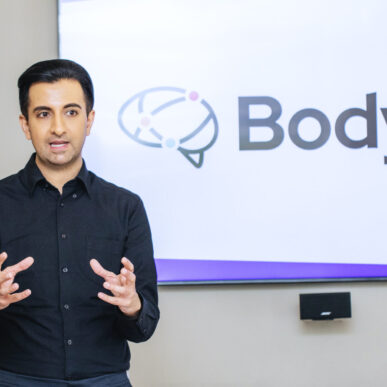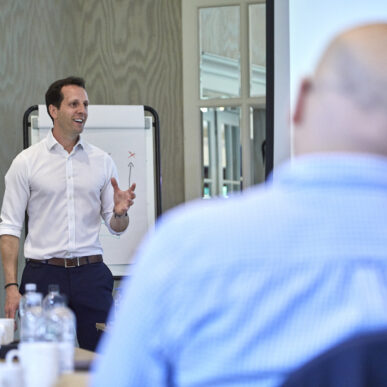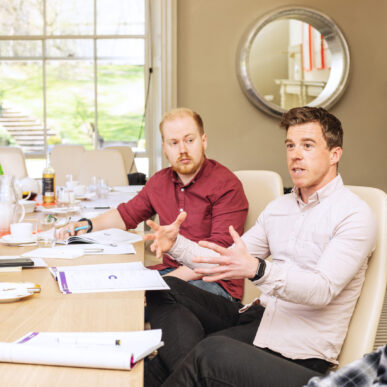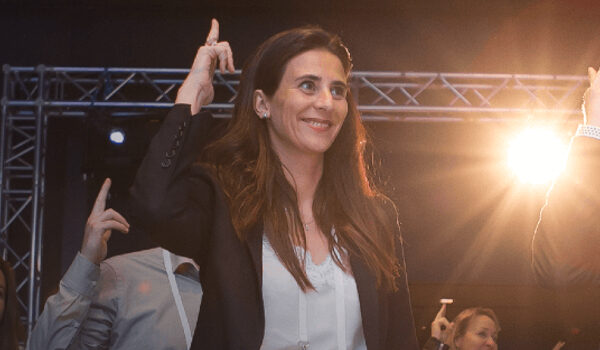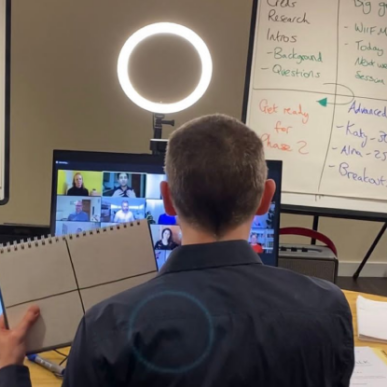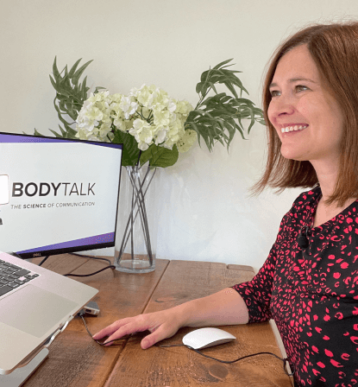3 Ways To Boost Your Presentation’s Impact
What makes a presentation memorable?
Look at popular TED Talks — the best ones, the ones that have the most views. More often than not, they generally don’t have any slides at all.
In fact, presentations are all about terrific storytelling.
Some TED Talks on exactly the same subject have wildly different numbers of views. Some spread, some don’t. We only feel compelled to click the ‘share’ button if we feel utterly engaged by the person and their story.
Here’s how you can make that happen:
1. Content: Start at the End
The first area that a lot of people focus on with their presentation is content.
They think it’s the easy bit to focus on, but they may not necessarily do it well. They write too much down, want to include too many extraneous details, or don’t get to the core points quickly enough.
So, I always recommend “starting at the end.”
You have to ask yourself, “What do I want people to walk away with after my presentation?” Be very clear about actions you would like them to take, or what new way of thinking you want them to have.
Once you know what you want from your ending, then you can flip back to the start.
For your introduction, you’ll need to give some context and backstory around why you’re giving this talk in the first place. People have very busy lives these days. They’ve got 17 meetings a day, 25 conference calls, and 3,000 emails, so you need to remind them about the purpose of this event.
Prime their minds to listen to you. This will make them much more likely to take action at the end, because you won them from the start.
2. Style: Focus on service
The next piece to think about is your style.
The way you present information is going to have a huge impact on what people take away from your talk. If you say the same words with a different style, you can end up delivering a completely different message.
Some people say, “I’m just going to be myself, and behave the way that feels comfortable.” This means you are just going to display any distracting habits that have built up during your career and now feel comfortable to you.
Your old pyjamas are comfortable, too, but you wouldn’t wear them for a presentation. So put down your old habits so you can bring your words to life.
Think about style this way — your job is to physically and vocally bring to life the words in a way that an email can’t. If you’re not going to do that, then cancel the meeting and send them an email.
Engage your face, voice, arms, and posture. Focus on how you want people to feel and let this guide your behaviour. Drop the professional poker face and connect with people.
3. Mindset: It’s Everything
The third and final part of your presentation is all about mindset.
Many people have brilliant communication styles in day-to-day life. You sit with them in the office and have a lovely time with them because they’re engaging and interesting to be around. But we all know that you can go in to a meeting with great content and style only to buckle under pressure and have the whole thing fall apart.
Having a good mindset on the day of your presentation, pitch, or speech is key.
This means removing negative self-talk and anxiety. There’s a voice in your head that will say, “I can’t do this. I shouldn’t do this. I should call up and cancel. It’s going to go badly and be a total disaster.”
This is known as your monkey mind.
This is the part of your mind that is trying to protect you from pain and keep you alive. It says all of these things to stop you from going in to that room and doing your job. You need to flip things around and find a way to calm your monkey mind.
You can do this by saying to yourself, “I’m in the right place,” which the monkey mind can’t disagree with. You are in the correct building, in the correct meeting room, and it’s a really nice way to pacify it.
If you say that sort of thing over and over to your monkey mind, it starts to think, “Yes, I am in the right place. I should just relax.” Then it will switch off and let you perform at your best.
You can use a similar technique to flip any anxiety you may have over presenting. Anxiety tends to be just visualizing things going badly.
Instead, you can imagine things going the way you’d like them to, which will put you in a much calmer state of mind.
To learn more about how we can help you please contact our team.








